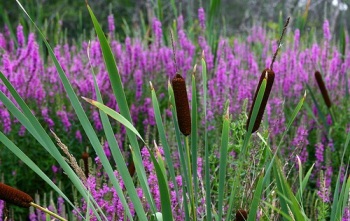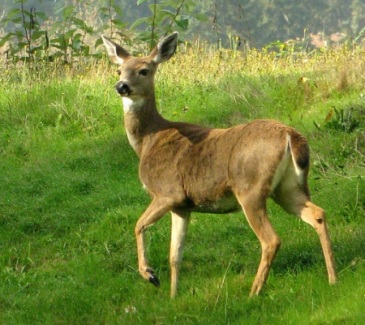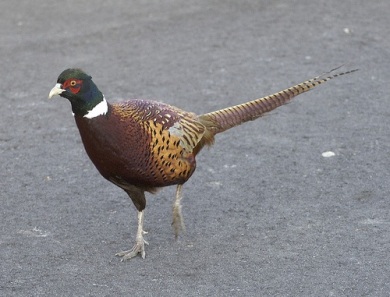We're here for a reason
 Typha latifolia has interactions with many other
organisms, including many animals. T. latifolia is very
closely related to Typha angustifolia. T. angustifolia
can be distinguished from T. latifolia by the water depth
it grows at. T. angustifolia grows in deeper water. It is
also occurs as a co-dominant in mixed stands with Bulrush (Scirpus
acutus, Scirpus californicus) and Maiden cane (Panicum
hemitomon). T. latifolia forms hybrid forms with
T. angustifolia, the narrow-leaved cattail, and
T.domingensis, the
southern cattail. These hybrids are only found where the areas
overlap, in east-central US coast and central California.
Typha latifolia has interactions with many other
organisms, including many animals. T. latifolia is very
closely related to Typha angustifolia. T. angustifolia
can be distinguished from T. latifolia by the water depth
it grows at. T. angustifolia grows in deeper water. It is
also occurs as a co-dominant in mixed stands with Bulrush (Scirpus
acutus, Scirpus californicus) and Maiden cane (Panicum
hemitomon). T. latifolia forms hybrid forms with
T. angustifolia, the narrow-leaved cattail, and
T.domingensis, the
southern cattail. These hybrids are only found where the areas
overlap, in east-central US coast and central California.

T. latifolia provides cover and about 5-10% of a water bird’s diet. During dry conditions, livestock and other native hoofed animals utilize it for food. The plant is also used by deer as a cover.
Above: white-tailed deer
(See also: deer ticks, which can be found in the wetlands)
 Waterfowl, cranes, grebes, wrens, pheasants, geese,
mallards,
and small mammals utilize it for food, important nesting and as a
relaxing environment. The plant is extremely important to common
muskrats, providing a major food source and material for nesting
habitats. White-footed mice also utilize the plant as a home. Many
types of moths (Bellura oblique, Dicymolomia julianalis, Simyra
henrici) feed on the leaves and stalk.
Waterfowl, cranes, grebes, wrens, pheasants, geese,
mallards,
and small mammals utilize it for food, important nesting and as a
relaxing environment. The plant is extremely important to common
muskrats, providing a major food source and material for nesting
habitats. White-footed mice also utilize the plant as a home. Many
types of moths (Bellura oblique, Dicymolomia julianalis, Simyra
henrici) feed on the leaves and stalk.
Above: pheasant
Humans also have many uses for T. latifolia. Almost every part of the plant is edible and has been used in different countries or tribes. The tissues contain tannin, a substance that is used in tanning, dyeing, and as an astringent. Many medicinal uses were also found. [See interesting facts for more information on human uses.]
song sparrow Simyra henrici tannin powder
Back to the marsh



